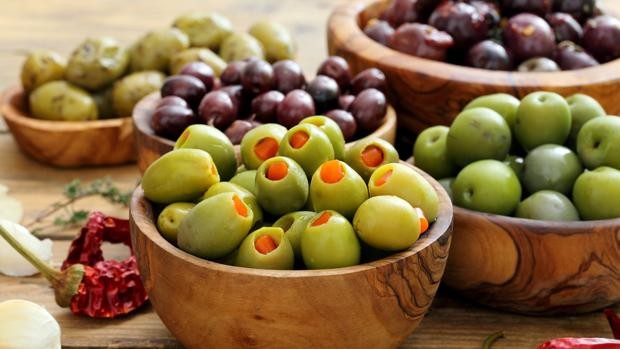Green, black, with bone, without it, stuffed, without filling, seasoned, without seasoning, large, small … olives are one of the treasures of the Mediterranean diet, being highly appreciated for the juice that is extracted from them ( olive oil (olive oil) and by the fruit as such. It is not surprising that it is the most widely offered aperitif at any time and in any bar and restaurant in Spain, since it has many varieties and provides us with multiple benefits.
At the nutritional level, as Ana Colomer, dietician-nutritionist, tells us, they are a source of fiber, monounsaturated fatty acids, vitamins and minerals. It should be noted that although the fat content of olives is high, “they are healthy fats”, since for the most part they are monounsaturated fats very rich in oleic acid (omega-9) and, although in smaller quantities, they also contain omega-3 and omega-6.
«The nutritional profile of olives stands out for being a good source of fatty acids, fiber and vitamin E, although its content of fatty acids causes olives to have a high energy value (120 kilocalories per 100 grams, according to the Bedca) », Says the expert, who adds that having a high sodium content (54 mg per 100 grams, according to Bedca) means that people with hypertension cannot abuse olives.
María José Sánchez, head of the AINIA Consumer Department, explains what it means for olives to be rich in monounsaturated fatty acids: «Oleic acid, which constitutes 99% of monounsaturated fatty acids, is largely responsible of the healthy attributes of olives, “he specifies, adding that this acid also helps regulate blood cholesterol levels” to contribute to good cardiovascular health and lower the risk of diseases of this type.
Why is it good to eat them
The fruit of the olive tree is also rich in tocopherol which, together with other antioxidant phenolic compounds, help fight free radicals: “They prevent the oxidation of cell membranes, improve endothelial function and also help prevent cardiovascular diseases” from the AINIA Consumer Department.
Vitamin A, also present in olives, helps keep tissues such as skin or mucous in good condition and is essential for healthy eyesight. Regarding minerals, María José Sánchez explains that they are very rich in sodium, so it is important that people who are hypertensive and have problems with salt take it into account to moderate their consumption.
Benefits of olives
They are a healthy and nutritious food.
They are antioxidants and rich in vitamin A and E
Enjoy on a sensory level as they are widely accepted
Good source of fiber
Types of olives
First of all, it must be borne in mind that not all olives are available in the same place, but that depending on the geographical area there will be one or another type. Apparently, in Spain different varieties of olives are grown, as the nutritionist Ana Colomer tells:
Gordal: they are the thickest and have an intense flavor
Hojiblanca: they are harder than the Gordal and their color can be green and black.
Chamomiles: they are the smallest and very round olives. This type are the most consumed.
Cacereña, Aloreña, Verdial, Lechín or Picual are others that can have double aptitude, that is, depending on the area where they are grown, they can be used for table or oil production.
According to dietitian Andrea Calderón, scientific secretary of the Spanish Society of Dietetics and Food Sciences (SEDCA), there are no olives healthier than others, although they vary in their nutritional composition and her advice when choosing one or the other is “to choose the one that each one more like it, or alternate between the different varieties that exist.
María José Sánchez, head of the AINIA Consumer Department, for her part differentiates its benefits based on color: «Olives are a food of great nutritional value, with black olives being greater than green ones due to their longer permanence on the tree . The green ones are harvested when they are still immature and the black ones are harvested when ripening has come to an end ”.
Nowadays there are in supermarkets an infinite number of product presentations: in glass, plastic or canned containers, with different formats and sizes, coming from different places and with various preparations and dressings … Even so, it is also possible to buying olives in bulk, especially in specialized stores, markets. You may ask yourself, “among so many variety, which one do I choose at the supermarket?”
Ana Colomer knows how to select the most appropriate ones: «When buying olives we must inform ourselves about the composition of the liquid in which they are found. This liquid is known as the ‘government liquid’ and must be discarded before consumption, as it contains a high amount of salt and / or sugars that help to preserve food correctly. For the expert, the ideal is to rinse the olives before eating them to remove any trace of that government liquid.

